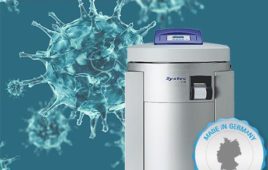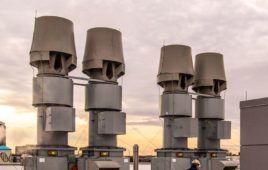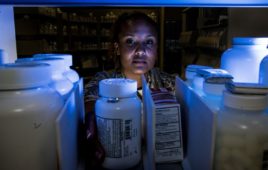Auditphobia: n. – The irrational fear of having someone discover that you knowingly broke the rules.
Some might say that a discussion of audits in April is more than a coincidence — and they would be right. But what better time to address such an important andsensitive topic?
No one willingly submits to an audit, since there is the likelihood that you will be taken to task for something — something you knew you shouldn’t have done. The very word itself triggers strong emotional and physical responses — poundinghearts, quickened pulses, clammy palms, shortened breath.
But the audits we want to deal with relate not to tax returns but to cleanrooms. For many, that may be little comfort; an audit is an audit, whether it’s the 1040 or the cleanroom that comes under scrutiny. To some degree that’s true. Like an IRS audit of a 1040, a clean-room audit is intended to uncoverexcursions from standard accepted practice.
The whole purpose of a cleanroom audit is to reassure cleanroom personnel (and management) that what’s being done in the cleanroom conforms to accepted standards of contamination control. On a 1040, it’s reasonably clear where the violations occur — it’s all there in the numbers in black and white. In a clean-room the excursions are more difficult to detect and uncover, because the contaminants are often invisible (see “The Problem Is, We Can’t See the Problem: Or……Our Eyes Deceive Us”, Controlled Environments Magazine, November 2007). The problems in a clean-room often do not stand out in black and white for all to see. So, to a great degree, we must rely on conformance to cleanroom standard operating procedures (SOPs) to protect us. In the simplest possible terms then,all a cleanroom audit is trying to accomplish is the verification of this conformance.
Optimally, a cleanroom audit occurs without warning or prior notification. The audit should be conducted by personnel who are knowledgeable about the internal SOPs and general contamination control procedures but who do not necessarily have direct responsibility for the manufacturing operations in the clean-room. Ignorance of the specifics of a particular process allows the auditor(s) to ask penetrating questions. Since a primary aspect of contamination control occurs in cleaning activities, where contaminants are physically and/or chemically removed from environmental, process, or product surfaces, this is where the auditor should focus. Actively observing the cleaning processes and verifying that they conform to internal published SOPs (cleaning agents, cleaning frequency, cleaning verification, etc.) will do much to prevent product failures and yield losses. This is the most positive outcome of a cleanroom audit. Obviously, passive contamination control activities, such as gowning and air filtration, play an important role in the cleanroom and deserve attention during the audit, but I recommend weighting the effort toward cleaning processes. Pay special attention to the maintenance (i.e., cleaning) of surfaces that are closest to the manufactured product.
So, the audit has been done and the observations (both good and bad) communicated to the necessary personnel. Now what? Do it again!
If the audit has uncovered needed changes to the SOPs, that becomes a high priority. Training personnel to the changes in the SOPs logically follows. Allow enough time for the audit recommendations to be instituted. Then repeat the audit to verify the desired improvements.
Auditphobia arises from a fear of being punished (the beatings will continue until morale improves). Remove this fear and operate from a basis of shared success. Sounds simple, but it takes a positive and encouraging attitude on the part of the auditor and diligence and buy-in from all levels of the organization to succeed.
Howard Siegerman, Ph.D., of Siegerman and Associates, LLC, can be reached at [email protected].



